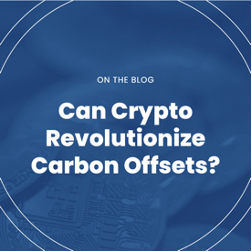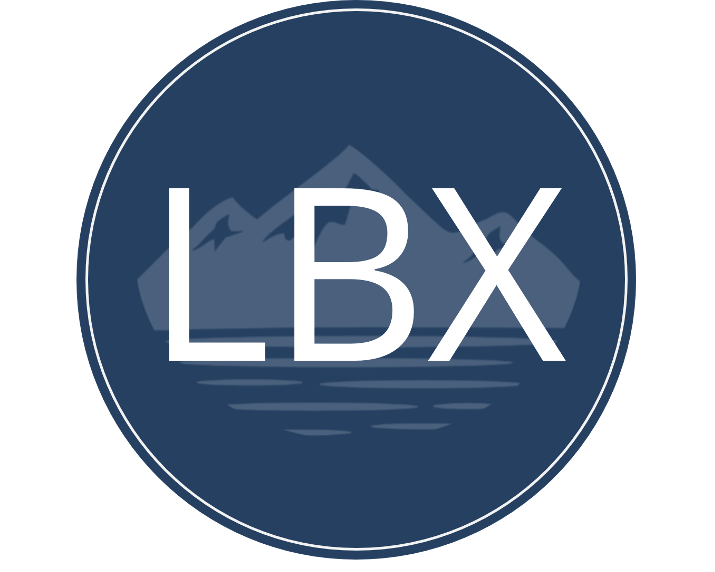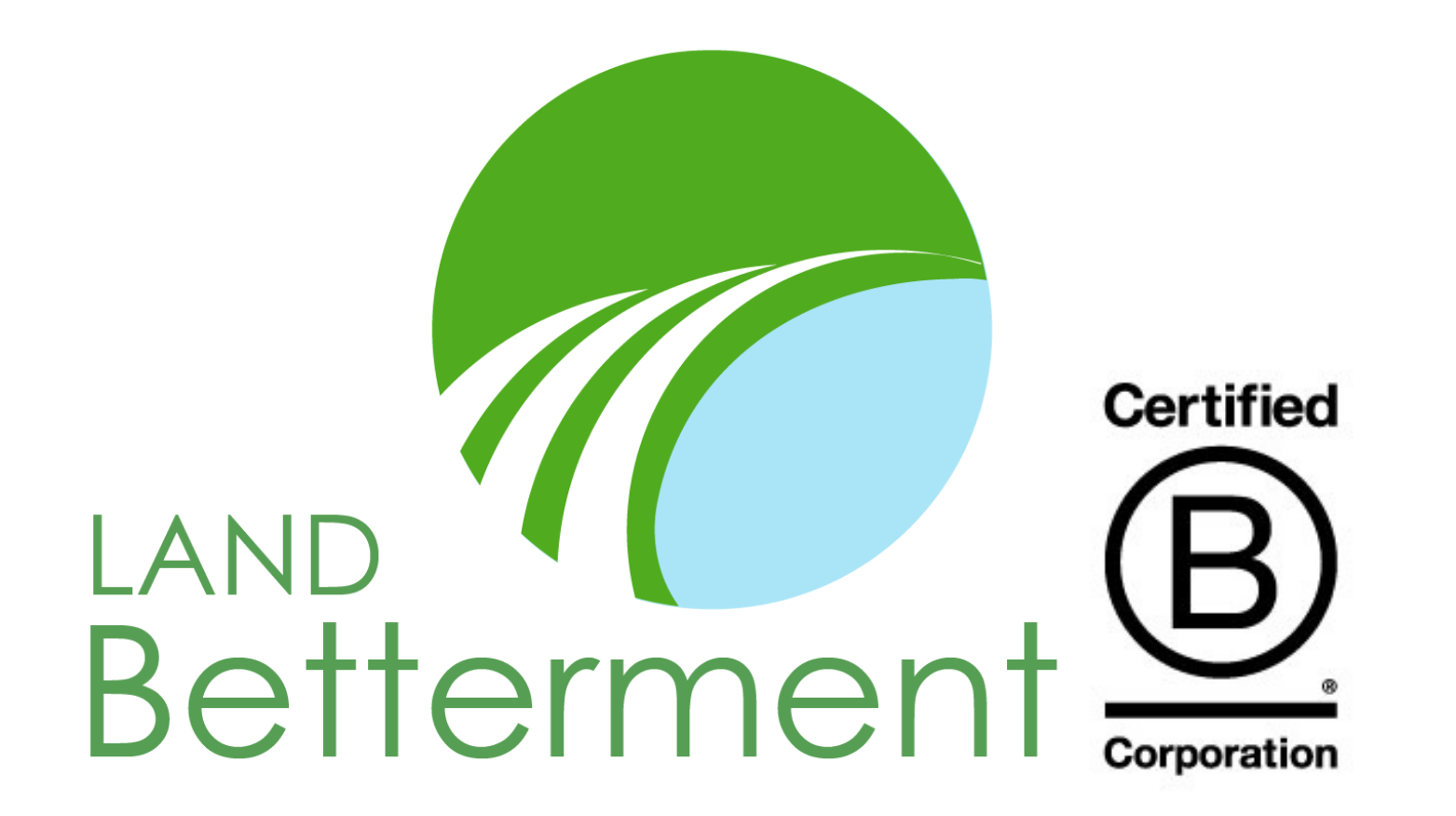Why Land Remediation Is the Future of Carbon Offsets
By: LBX Editorial Team
A recent report from McKinsey & Company offered some hard evidence for what environmentalists have long known to be a mounting concern: The current carbon offset market will struggle in the next thirty years to meet the exponentially increasing demands placed on it by corporate America’s collective drive to meet their carbon pledges.
Carbon offsets, which are typically based on neutrality and preservation, are woefully unable to meet this challenge for two reasons: they are inadequate to tangibly address the accelerating climate crisis, and there simply are not enough of them to meet corporate demand. They are neither truly meaningful nor scalable.
With a little bit of help from green crypto, however, (more on that later), the Land Betterment Exchange (LBX) believes it has found a win-win solution to this supply side shortage by tying carbon offsets to a positive impact model based on local land remediation projects. With the number of abandoned, blighted lands only increasing in the fossil fuel industry’s wake, LBX has uncovered a new source of carbon offsets.
In pulling carbon offsets from neutral to positive, LBX at once helps rehabilitate negatively-impacted lands and helps corporations meet their carbon pledges in meaningful and verifiable ways.
Whatever the future of carbon offsets may be, land remediation most certainly has an important role to play.
Corporate Responsibility Leads to Increased Demand for Carbon Offsets
Buoyed by ESG calls for corporate responsibility, the demand for carbon offsets is growing exponentially. Consider that in less than one year—between 2019 and 2020—the number of companies with net-zero pledges doubled from 500 to 1,000. That number has only increased since.
It is not surprising, then, that the Taskforce on Scaling Voluntary Carbon Markets (TSVCM), recently estimated that the demand for carbon credits will likely increase by a factor of 15 (up to 2.0 gigaton of CO2) between now and 2030. Moreover, the TSVCM further estimates that by 2050, demand will have increased by a factor of 100 (up to 13 gigaton of CO2).
In less than thirty years, the demand for carbon offsets will be 100 times greater than today. Yet, in its current state, the carbon offset market cannot come close to meeting this projected demand.
The Current and Future Shortcomings of Carbon Offsets
In fact, the current carbon offset market is having trouble keeping up with current demand, to say nothing of future increases. This is because it is dominated by neutral solutions based on preservation, i.e. preventing deforestation on specific tracts of land.
The problem is, most preservation projects are located in a small number of countries and, frankly, they’re starting to run out of land and resources to protect as more and more of it is claimed by retired carbon offsets. Eventually there will simply be no trees left to preserve, and the industry will scramble to find increasingly slippery ways of deciding what are carbon offsets and how they should be awarded.
Yet, even if neutral-based solutions could keep up with mounting demand (which, again, they can’t), it is becoming increasingly clear that they were never the ideal solution to begin with.
This is because preservation rests on the fantastical belief that a neutral solution—ensuring trees are not cut down—can offset negative environmental impact. LBX rejects this logic, believing that only positive impact can offset negative impact.
Think of it this way: if somebody sets your house on fire, they can’t offset the impact by paying a stranger not to set their own house on fire. They have to fix your house. Well, it’s the same with the planet. It’s not enough to ensure existing trees aren’t cut down, you have to plant new ones to truly offset negative environmental impact.
As the world transitions to a global green economy, carbon offset demand will increase, and the current carbon offset market, based on preservation, cannot meet this demand. But, with the land remediation of former fossil fuel properties, LBX has found a novel solution to this problem.
A Land Remediation Solution
As companies rush to secure carbon offsets, another transition is simultaneously occurring: the global transition away from fossil fuels. As this happens, fossil fuel industry properties, made up of distressed and blighted land, will no longer be profitable for companies to maintain. The fossil fuel industry will leave in its wake massive amounts of negatively impacted land.
LBX not only seeks to capitalize on this transition, it looks to accelerate it by tying its remediation to carbon offsets.
There are currently $15 billion worth of environmental impact in the US underlying permitted fossil fuel industry properties, and that number will surpass $200 billion by 2030.
If that trajectory of growth over the next ten years feels familiar, it’s because it runs a parallel track to carbon offset demand over the next ten years. LBX essentially looks to turn a negative into a positive, remediating former fossil-fuel lands and reforesting them. This is a win-win situation that has tangible positive impact as opposed to the mere neutrality of preservation-based offsets.
As LBX Founder and Executive Chairman Mark Jensen put it, “We believe it’s imperative that we act fast and deliberate to develop real quantifiable carbon offsets to meet the market demand in the voluntary market.”
By directly tying carbon offsets to land remediation achieved by cleaning and reforesting lands abandoned by the fossil fuel industry, LBX has solved two problems at once. It has found a way to reward and accelerate land remediation in the United States to return land to its pre-fossil fuel state, and it has found a verifiable, local, and impactful way to bring new carbon offsets to a market struggling to supply them.
Conclusion
When you think about it, there is a beautiful symmetry in LBX’s solution to the carbon offset conundrum.
By taking this solution and pairing it with green crypto, LBX has found a revolutionary way to positively incentive participants at every level. From environmental specialists in need of funding for land remediation projects and corporate sponsors looking for verifiable and meaningful carbon offsets to local workers displaced by the transition from fossil fuels, each group can contribute and derive value from their work.
As the TSVCM stresses, “The world will need a voluntary carbon market that is large, transparent, verifiable, and environmentally robust.” By pairing carbon offsets with US-based land remediation projects, and placing these carbon offsets onto the blockchain, LBX believes they have taken big steps towards meeting this challenge.
As climate change goes from future threat to current catastrophe, the earth demands no less.
About Land Betterment Exchange (LBX)
Land Betterment Exchange (LBX) is an environmentally driven token that creates a financial incentive and trading market to pull forward environmental cleanup and expedite the transition away from fossil fuels while providing new sustainable livable wage jobs for the local community. It is a token built off the ERC-20 Ethereum framework that provides a direct financial incentive to promote and accelerate environmental cleanup of negatively impacted lands from the fossil fuel industry. Land Betterment Exchange has engaged Land Betterment as its token issuance partner to ensure that the integrity of the token issuance process is adhered to and the environment cleanup is completed. Land Betterment Exchange (LBX) is in the final stages of selecting a cryptocurrency exchange for its initial token listing. Visit the Company at lbxtoken.com and track us on your favorite platform for more information on our imminent listing and the environmental value of the LBX token. Facebook, LinkedIn, Instagram, Reddit, Tiktok.
About Land Betterment Corporation
Land Betterment Corporation, an Indiana Benefit Corporation and Pending B-Corp, is an environmental solutions company focused on fostering a positive impact through upcycling former coal mining sites to create sustainable community development and job creation. The Company utilizes a complete solution-based lifecycle program to restore and rehabilitate the environment and revitalize communities in need of change and opportunity. Land Betterment accomplishes this by identifying un-reclaimed, run-down and neglected coal mining sites, fixing the environment through reclamation and remediation, and then repurposing the land to support a sustainable business that serves the community. Land Betterment firmly believes that with real solutions it is possible for restoration of impacted areas to live side-by-side long term employment, while building sustainable and safe surroundings for communities and our planet. Visit the Company at landbetterment.com and connect with us on LinkedIn Twitter and Facebook.
Company Contacts:
Mark LaVerghetta
317.537.0492 ext. 0
Chief Governance Officer, Corporate Finance
info@landbetterment.com
Stephanie Conzelman
207.205.0790
Stakeholder Engagement Director
info@landbetterment.com



